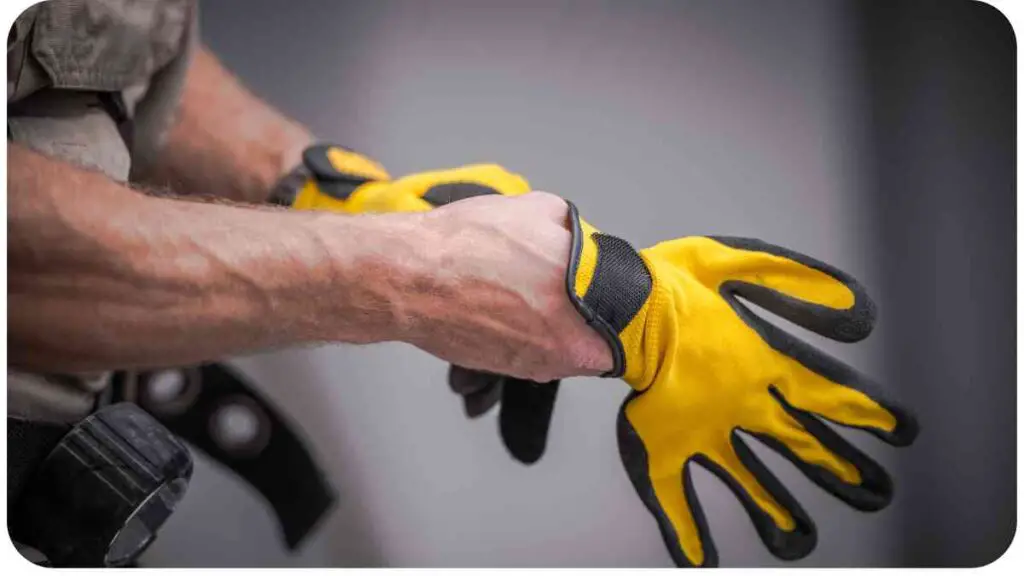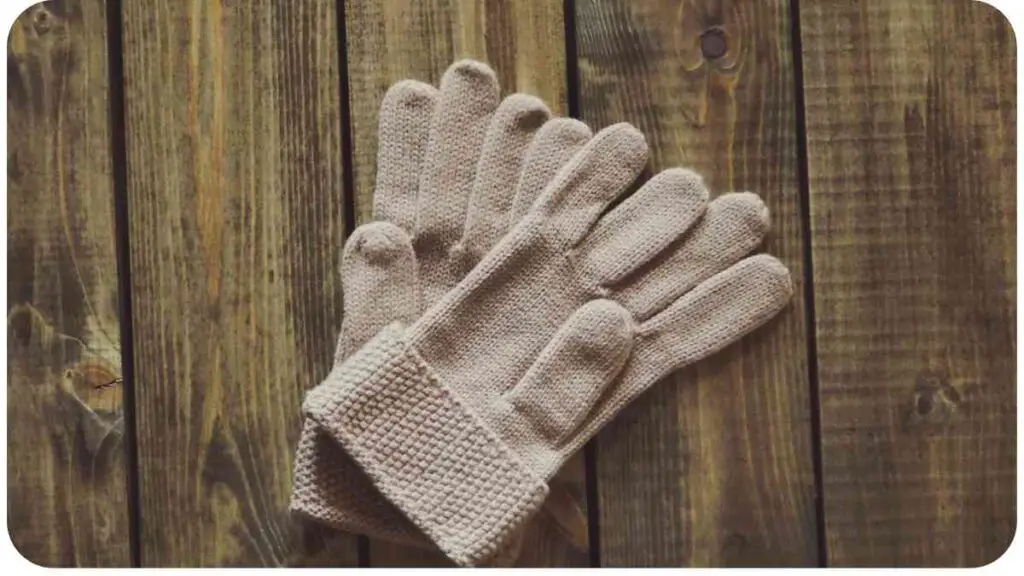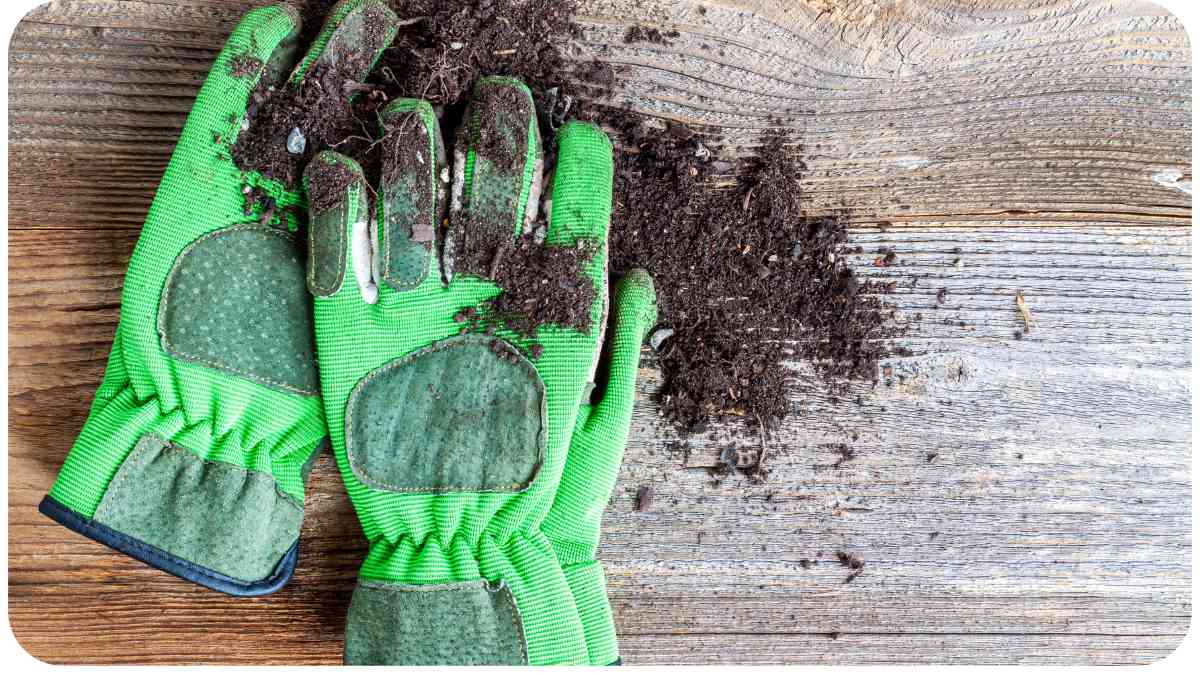Welcome to our guide on extending the lifespan of your belay gloves! If you’ve ever found yourself frustrated with the rapid wear and tear of your belay gloves, we understand your situation. In this article, we will explore the reasons behind belay gloves wearing out quickly and provide you with expert tips to ensure longevity.
Our goal is to equip you with the knowledge and strategies to choose durable belay gloves, care for them properly, and even implement alternative techniques for extending their lifespan. So, let’s dive in and discover how you can get the most out of your belay gloves!
| Takeaway |
|---|
| Choosing the right belay gloves is crucial for comfort and protection during climbing activities. |
| Select high-quality gloves made from durable materials such as leather or synthetic fibers reinforced with Kevlar. |
| Look for double stitching and reinforced areas on the gloves for enhanced longevity. |
| Ensure a proper fit by trying on different sizes or consulting size guides. |
| Practice regular cleaning and proper maintenance to extend the lifespan of your belay gloves. |
| Consider alternative strategies like using a double-layer technique or rotating gloves to distribute wear. |
| Fingerless gloves can be used for belaying tasks that don’t require full hand coverage. |
| Reinforce high-friction areas with climbing tape for added durability. |
| Explore further reading resources to gain more in-depth knowledge on belay gloves. |
| Refer to FAQ section for answers to common questions about belay gloves. |
2. Understanding Belay Gloves
Before we delve into tips for increasing the longevity of your belay gloves, it’s essential to understand what belay gloves are and their purpose. Belay gloves are protective gloves specifically designed for climbers and belayers to provide comfort, grip, and protection while handling ropes.
They are crucial for ensuring a secure belay and protecting your hands from friction, heat, and rope burn during climbing activities. By investing in a reliable pair of belay gloves, you can enhance your climbing experience while keeping your hands safe.
Struggling with discomfort during climbs? Ensure your harness fits perfectly and explore fixes and tips for a more comfortable ascent.
3. Common Reasons for Belay Gloves Wearing Out Quickly

It can be disheartening to notice your belay gloves wearing out much faster than expected. However, several common factors contribute to this issue. By identifying these reasons, you can take proactive measures to mitigate them. Some of the main causes for belay gloves wearing out quickly include:
- Friction and abrasion: Constantly manipulating ropes and coming into contact with rough surfaces can cause rapid wear on the gloves.
- Poor glove quality: Investing in low-quality gloves may save you money initially, but they tend to wear out quickly due to subpar materials and construction.
- Improper sizing: Ill-fitting gloves can lead to excessive stretching and accelerated wear.
- Lack of care and maintenance: Neglecting regular cleaning and maintenance routines can reduce the lifespan of your gloves.
Understanding these factors will help you make informed decisions when selecting belay gloves and implementing proper care practices.
4. Tips for Choosing Durable Belay Gloves
When it comes to selecting belay gloves with excellent durability, a few key factors are worth considering. By prioritizing these aspects, you can make an informed decision that aligns with your needs and helps extend the lifespan of your gloves. Consider the following tips:
- Opt for gloves made from durable materials such as high-quality leather or synthetic fibers reinforced with Kevlar.
- Look for double stitching and reinforced areas to enhance the gloves’ longevity.
- Ensure a proper fit by trying on different sizes or consulting size guides provided by the manufacturer.
- Seek recommendations from experienced climbers or trusted sources to identify reputable brands known for their durable belay gloves.
To make your selection process more convenient, the following table offers a comparison of popular belay glove brands and their key features:
Enhance your descent safety by solving common problems with belay devices. Learn crucial tips for a secure and smooth rappelling experience.
5. Proper Care and Maintenance for Belay Gloves

To maximize the lifespan of your belay gloves, it is essential to develop proper care and maintenance habits. By following these simple steps, you can ensure your gloves remain in top condition for as long as possible. Refer to the table below for a quick overview of the care and maintenance routine:
| Step | Description |
| Regular Cleaning | Gently hand wash the gloves using mild soap and water. |
| Drying | Allow the gloves to air dry naturally, away from heat. |
| Storage | Store gloves in a cool, dry place away from direct sunlight. |
| Avoid Chemicals | Keep gloves away from damaging chemicals, oils, or solvents. |
| Sunscreen & Lotion | Apply sunscreen or lotion to your hands before putting on the gloves. |
| Avoid Excessive Moisture | Remove gloves promptly if they become wet and allow them to dry completely. |
By following these simple steps, you can significantly extend the lifespan of your belay gloves and ensure their effectiveness during climbing activities.
Safeguard your descent! Address common rappelling concerns with expert tips, ensuring a smooth and secure rappelling experience for your next vertical adventure.
6. Alternative Strategies for Extending Belay Glove Lifespan
Apart from choosing durable gloves and practicing proper care, there are additional strategies you can implement to enhance the longevity of your belay gloves. These strategies can supplement your efforts and help you make the most of your gloves. Consider the following tips:
- Double-layer technique: Using a thin liner glove underneath your belay gloves can provide an extra layer of protection and minimize wear on the outer gloves.
- Rotating gloves: If you frequently engage in climbing activities, investing in multiple pairs of belay gloves and rotating them can distribute the wear more evenly, preventing one pair from wearing out too quickly.
- Specialized fingerless gloves: Consider using fingerless gloves for belaying tasks that don’t require full hand coverage. This way, you can reserve your full-coverage belay gloves for situations that demand more hand protection.
- Strategically tape vulnerable areas: Identify high-friction areas on your gloves and reinforce them with climbing tape. This simple technique can provide extra durability to these specific areas.
To help you choose the best alternative strategy for your needs, refer to the following table comparing the effectiveness and suitability of each approach:
Ascend with confidence! Explore causes, symptoms, and remedies for altitude sickness, ensuring a safer and more enjoyable high-altitude climbing experience.
| Strategy | Effectiveness | Suitability |
| Double-layer technique | Moderate | Regular climbers |
| Rotating gloves | High | Frequent climbers |
| Fingerless gloves | Low | Belaying only |
| Taping vulnerable areas | Moderate | Occasional climbers |
Implementing these strategies alongside proper care and maintenance will greatly enhance the lifespan of your belay gloves and provide more value for your investment.
7. Personal Experience: Overcoming Belay Glove Wear and Tear
As a professional climber with extensive experience in belaying, I have encountered my fair share of belay glove wear and tear. However, through trial and error, I’ve developed effective strategies to overcome these challenges and ensure the longevity of my gloves.
One of the most significant factors that made a difference for me was selecting belay gloves from reputable brands that prioritize durability. I realized that investing in high-quality gloves upfront saves money in the long run and offers better protection and comfort during climbing activities.
Additionally, I discovered the effectiveness of rotating my gloves. By having multiple pairs and alternating their usage, I observed a remarkable reduction in wear and tear. This approach not only prolonged the lifespan of each pair but also contributed to a more consistent climbing experience in terms of grip and comfort.
Lastly, I started using fingerless gloves for belaying tasks that didn’t require full hand coverage. This allowed me to reserve my full-coverage belay gloves for instances where I needed maximum protection, thus minimizing unnecessary wear.
By combining these strategies with proper care and maintenance, I have significantly extended the lifespan of my belay gloves and saved money in the long run.
Experiencing twists in your harness? Discover fixes to maintain a secure and untangled climbing harness, ensuring optimal safety during your vertical endeavors.
8. Conclusion
Belay gloves are essential equipment for climbers and belayers, providing comfort, grip, and protection. However, it can be frustrating when these gloves wear out quickly. By taking a proactive approach and following the tips and strategies outlined in this article, you can significantly enhance the longevity of your belay gloves.
Remember to choose durable gloves from reputable brands, practice proper care and maintenance, and explore alternative strategies such as rotating gloves and using fingerless gloves for specific tasks. By combining these efforts and leveraging personal experience, you can enjoy longer-lasting belay gloves, improved climbing experiences, and greater value for your investment.
Now that you have the knowledge and insights, it’s time to embark on your climbing adventures with confidence and protection, knowing that your belay gloves will be by your side every step of the way. Happy climbing!
Further Reading
Here are some additional resources that you can explore to dive deeper into the topic of belay gloves:
- Gear Review: What You Need to Know About Belay Gloves: This comprehensive gear review provides valuable insights into the features, materials, and performance of different belay gloves. You’ll gain a better understanding of what to look for when selecting the right pair for your climbing needs.
- Best Climbing Gloves of the Year: Outdoor Gear Lab presents a roundup of the best climbing gloves available, including belay gloves. This article offers detailed comparisons and rankings, helping you make an informed decision when purchasing your next pair of belay gloves.
- Choosing Rappelling Gloves for a Safe Rappel: Although focusing on rappelling gloves, this resource provides helpful insights into glove selection, features, and safety considerations. Many of the tips and guidelines discussed can be applied to belay gloves as well.
These resources will expand your knowledge on belay gloves, their features, and provide you with helpful recommendations. Happy reading!
FAQs
Here are some frequently asked questions (FAQs) related to belay gloves:
1. Can I wear regular gloves for belaying instead of specific belay gloves?
While it is possible to wear regular gloves for belaying, they may not provide the same level of grip, dexterity, and protection as belay gloves. Belay gloves are designed specifically for climbing activities and offer features such as reinforced areas, improved grip, and heat resistance to handle ropes effectively and protect your hands.
2. How do I determine the correct size for belay gloves?
To find the right size, it’s recommended to refer to the manufacturer’s sizing chart or try on different sizes to ensure a snug fit. Properly fitted gloves offer better performance, comfort, and minimize excessive stretching that can lead to premature wear.
3. Can I wash my belay gloves?
Yes, you can wash belay gloves to maintain cleanliness and remove dirt or grime. However, it’s important to follow the manufacturer’s instructions for cleaning, as some gloves may require specific care methods. Always allow the gloves to fully dry before using them again.
4. How often should I replace my belay gloves?
The lifespan of belay gloves depends on various factors, including frequency of use, intensity of climbing activities, and the quality of the gloves. It’s a good practice to regularly inspect your gloves for signs of wear and tear. If you notice significant damage, loss of functionality, or compromised protection, it’s time to replace them.
5. Can I use belay gloves for other activities besides climbing?
While belay gloves are primarily designed for climbing and belaying, you can also utilize them for other activities that involve similar hand protection requirements. These may include rappelling, canyoneering, rope work, or any activity where you need enhanced grip and hand protection.
Remember, if you have any specific concerns, it’s best to consult with the manufacturer or a knowledgeable professional in the field to address your questions and ensure you have the appropriate gear for your intended activities.

Welcome to my blog! I’m Hellen James, and I’m incredibly passionate about rock climbing, bouldering, ice climbing, and mountaineering. Join me as I embark on thrilling adventures, conquer vertical challenges, and share my experiences and insights with fellow outdoor enthusiasts.


